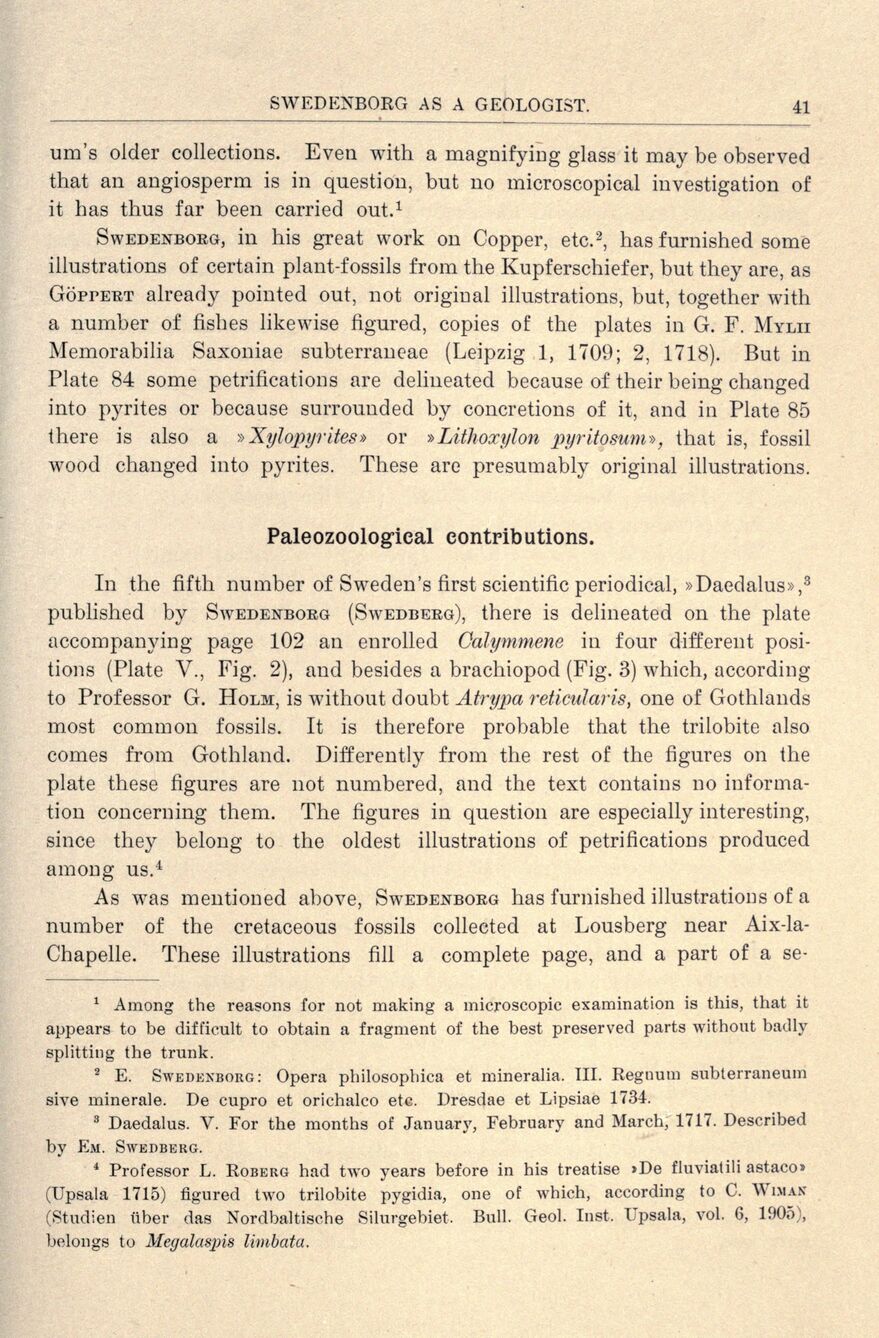
Full resolution (JPEG) - On this page / på denna sida - Sidor ...

<< prev. page << föreg. sida << >> nästa sida >> next page >>
Below is the raw OCR text
from the above scanned image.
Do you see an error? Proofread the page now!
Här nedan syns maskintolkade texten från faksimilbilden ovan.
Ser du något fel? Korrekturläs sidan nu!
This page has never been proofread. / Denna sida har aldrig korrekturlästs.
ura’s older collections. Even with a magnifying glass it may be observed
that an angiosperm is in question, but no microscopical investigation of
it has thus far been carried out.1
Swedenborg, in his grcat work on Copper, etc.1 2, has furnished some
illustrations of certain plant-fossils from the Kupferschiefer, but they are, as
Göppert already pointed out, not original illustrations, but, together with
a number of fishes likewise figured, copies of the plates in G. F. Mylii
Memorabilia Saxoniae subterraneae (Leipzig 1, 1709; 2, 1718). But in
Plate 84 some petrifications are delineated because of their being changed
into pyrites or because surrounded by concretions of it, and in Plate 85
there is also a »Xylopyrites» or »Lithoxylon pyritosum», that is, fossil
wood changed into pyrites. Tliese are presumably original illustrations.
Paleozoological contributions.
In the fifth number of Sweden’s first scientific periodical, »Daedalus»,3
published by Swedenborg (Swedberg), there is delineated on the plate
accompanying page 102 an enrolled Calymmene in four different
positions (Plate V., Fig. 2), and besides a brachiopod (Fig. 3) which, according
to Professor G. Holm, is without doubt Atrypa reticularis, one of Gothlands
most common fossils. It is therefore probable that the trilobite also
comes from Gothland. Differently from the rest of the figures on the
plate these figures are not numbered, and the text contains no
information concerning them. The figures in question are especially interesting,
since they belong to the oldest illustrations of petrifications produced
among us.4
As was mentioned above, Swedenborg has furnished illustrations of a
number of the cretaceous fossils collected at Lousberg near
Aix-la-Chapelle. These illustrations fill a complete page, and a part of a se-
1 Among the reasons for not making a microscopic examination is this, that it
appears to be difficult to obtain a fragment of the best preserved parts without badlv
splitting the trunk.
2 E. Swedenborg: Opera philosophica et mineralia. III. Regnum subterraneuin
sive minerale. De cupro et orichalco etc. Dresdae et Lipsiae 1734.
3 Daedalus. V. For the months of January, February and March, 1717. Described
by Em. Swedberg.
4 Professor L. Roberg had two years before in his treatise »De fluviatili astaco*
(Upsala 1715) figured two trilobite pygidia, one of which, according to C. M iman
(Studien fiber das Nordbaltische Silurgebiet. Buil. Geol. Inst. Upsala, vol. 6, 1905),
belongs to Megalaspis limbata.
<< prev. page << föreg. sida << >> nästa sida >> next page >>